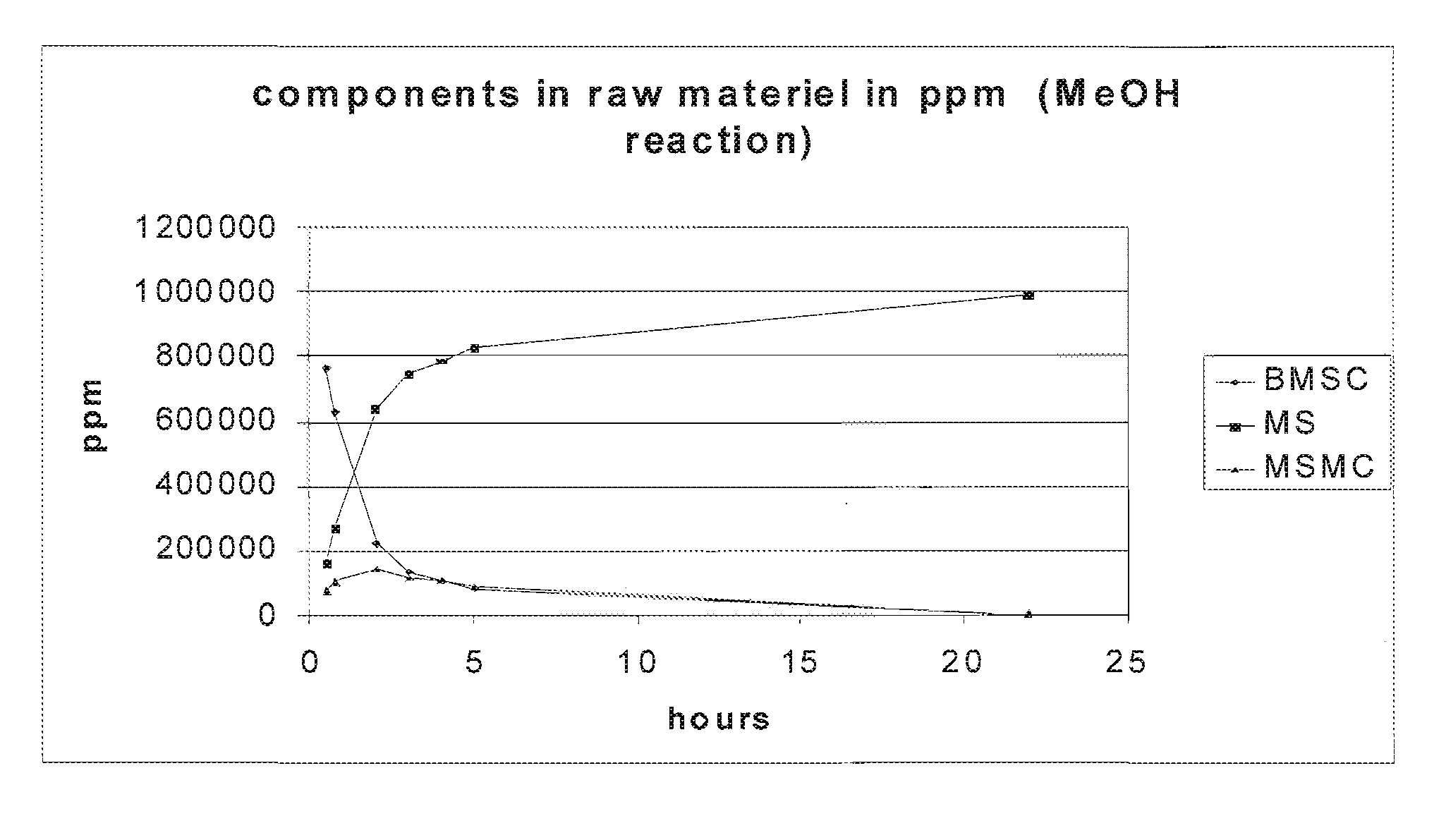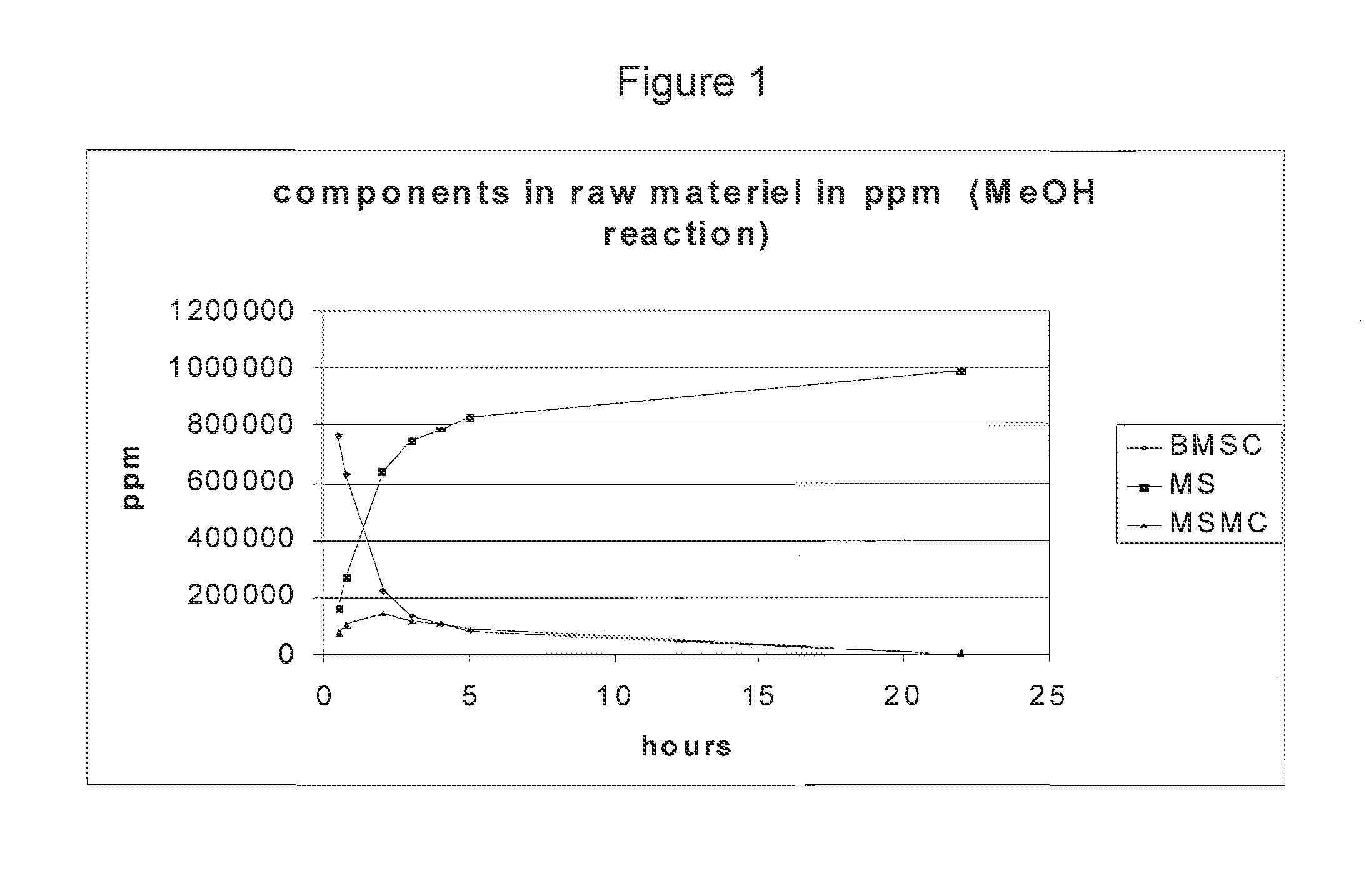Method for producing phenolic compound
a phenolic compound and compound technology, applied in the field of phenolic compound production, can solve the problems of high investment and variable costs, process does not produce an acceptable stream of ester-substituted phenol, and no economically useful process to efficiently recover these compounds
- Summary
- Abstract
- Description
- Claims
- Application Information
AI Technical Summary
Problems solved by technology
Method used
Image
Examples
second embodiment
II. The Second Embodiment “A Continuous-Type Process” and / or “A Semi-Continuous-Type Process”
[0076]In a second embodiment, a continuous-type or semi-continuous-type process may be employed to produce an ester-substituted phenol. The phrases “continuous-type process” and “semi-continuous-type process” are herein understood to mean that produced ester-substituted phenol is removed from the reaction mixture after it has been generated. This can be done at all times (e.g. continuously) or it can be done periodically (e.g. semi-continuously). In either case it is most preferred that product ester-substituted phenol is removed from the reaction mixture to maintain an amount product ester-substituted phenol in the reaction mixture such that it makes up 1.0 wt. % or less, for example 0.5 wt. % or less, and most preferably 0.25 wt. % wt. % or less of the reaction mixture.
[0077]In this second embodiment, the Inventors have found that the presence of water in the reaction mixture is less probl...
example 1
Recycling of BMSC Dissolved in Methanol at 65° C. with Catalyst
Reaction:
[0115]The reaction was done using a 500 ml round bottom flask with a cooler and a magnetic stirrer attached. 19.920 g BMSC was loaded in the reactor and dissolved in 410 ml methanol at 65° C. When all BMSC was dissolved, 200 μl catalyst (250 eq TMAH+100 eq NaOH) was added to the solution. The reaction mixture was left to react under reflux for 22 hrs and subsequently cooled down to RT. Samples were taken after 30 min., 45 min., 2, 3, 4, 5, and 22 hrs.
[0116]HPLC results of each of the fractions described above can be found in FIG. 1. MSMC is MS-Methyl carbonate. Full or nearly full conversion was achieved. The BMSC concentration decreased over time while the concentration of MS increased to almost 100%. The reaction of MS to MSMC is apparently reversible because the MSMC concentration dropped to nearly zero after 22 hrs.
[0117]A distillation was carried out on the obtained mixture after 22 hrs of reac...
example 2
BMSC Melt Mixing with Catalyst
[0118]The reaction was done using a 250 ml round bottom flask, with cooler, vacuum pump, cooling trap and spider attached. 13 g of distillate 1 and 26 g of distillate 2 of BMSC residual was molten in the round bottom flask at 130° C. (oil bath 150° C.). When all BMSC was molten 200 μl catalyst (250 eq TMAH+100 eq NaOH) was added (under liquid level). Reaction blend was left to react for 30 minutes. The vacuum pump was turned on and the pressure decreased to 23 mbar, this resulting in boiling of the blend. Subsequently the oil bath temperature was increased to 160° C. and the pressure decreased to 16 mbar. When the overhead temperature starts to increase the first fraction could be collected. After 10 minutes the distillation is slowing down rapidly and after 30 minutes the reaction almost stopped, even when the oil bath temperature was increased to 165° C. the distillation still stopped therefore the test was stopped. Only a very small amount of distill...
PUM
| Property | Measurement | Unit |
|---|---|---|
| temperature | aaaaa | aaaaa |
| temperature | aaaaa | aaaaa |
| pressure | aaaaa | aaaaa |
Abstract
Description
Claims
Application Information
 Login to View More
Login to View More - R&D
- Intellectual Property
- Life Sciences
- Materials
- Tech Scout
- Unparalleled Data Quality
- Higher Quality Content
- 60% Fewer Hallucinations
Browse by: Latest US Patents, China's latest patents, Technical Efficacy Thesaurus, Application Domain, Technology Topic, Popular Technical Reports.
© 2025 PatSnap. All rights reserved.Legal|Privacy policy|Modern Slavery Act Transparency Statement|Sitemap|About US| Contact US: help@patsnap.com



